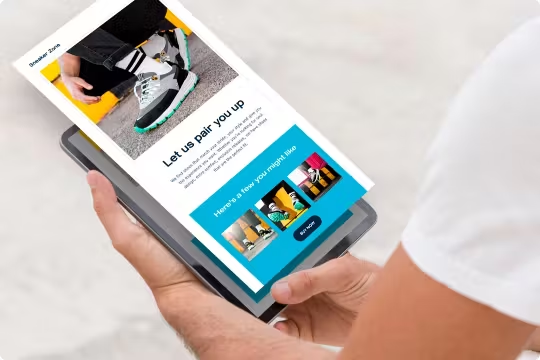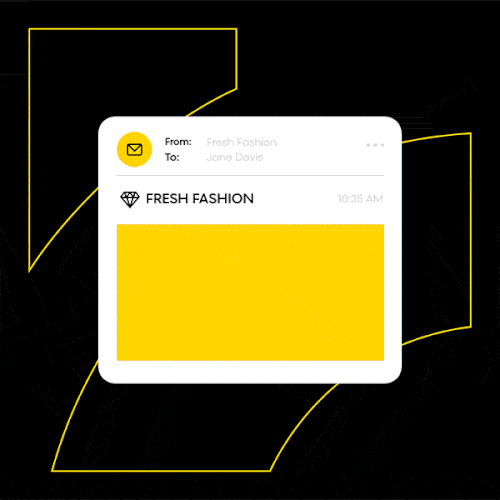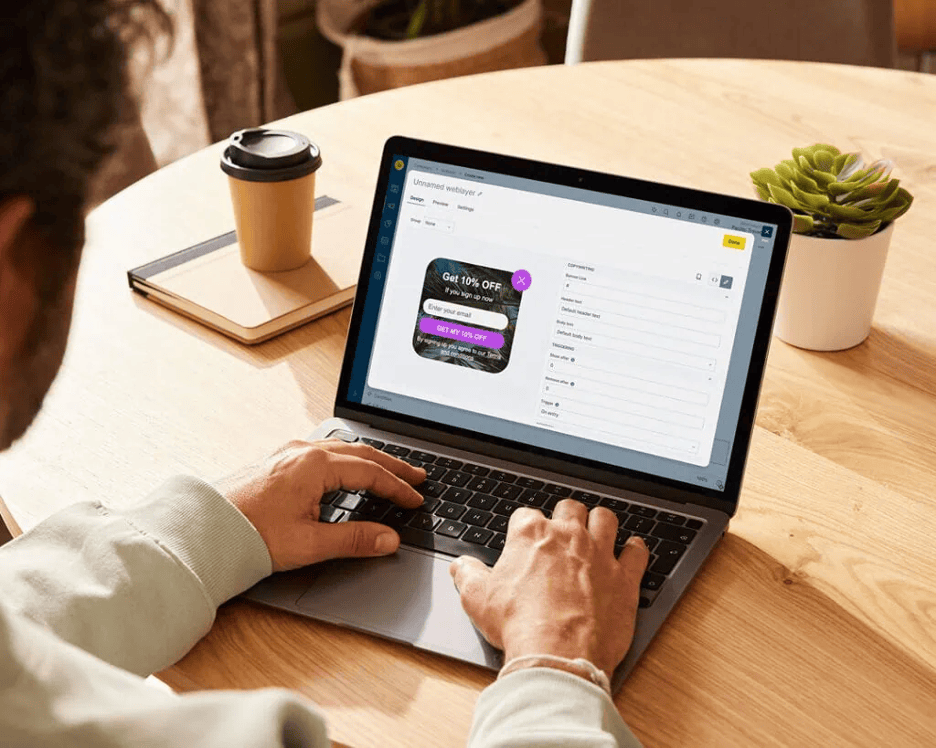Introduction
In the modern ecommerce world, personalization is everything. It’s what engages customers, inspires them, and keeps them coming back. As the global economy moves closer to a recession, it’s important to apply those personalization tactics to your tried-and-true customer communication strategy — email marketing.
As ecommerce personalization becomes more ingrained into the daily fabric of our lives in digital commerce and collecting customer data becomes more challenging because of privacy laws, cookie restrictions, and other factors, it’s important to understand that all personalization efforts must now start with one thing: first-party data.
What is First-party Data?
First-party data is the fuel you need to drive successful email personalization initiatives and strategies in ecommerce.
Specifically, first-party data is customer information that your company collects directly via its own channels and sources with the customer’s consent. These channels include email, mobile apps, websites, social media, SMS, and more. Since you are collecting this data yourself, it obviously makes the data unique, as no other company is able to collect these specific data points. Advancements in modern marketing technology make it possible to centrally access this information and use it in marketing automation campaigns.
You can comfortably rely on this data for one massive reason — you’ve sourced it yourself. You know you’ve collected it compliantly and can now use it to strategize and scale winning customer journeys with your brand.
But what should you actually do with this data? What’s different about personalizing emails with first-party data? What proverbial doors does first-party data open for you?
You have to first truly understand what personalization means for your business and what’s feasible when it comes to executing use cases that result in your customers having personalized experiences with your brand. Understand how your company defines success with ecommerce personalization and lean into that mission.
Personalization lacks one true definition — it means something different to every brand. While we may define personalization as the practice of using commerce data responsibly to get to know, guide, and impress your customers with experiences that are so relevant and contextual they feel like magic, it’s completely reasonable that your company defines the concept differently.
It’s possible to personalize your email communications using first-party data without having to invest time and resources into creating dozens of different email templates or other time-consuming tasks. Doubling down on first-party data efforts in relation to email can help you increase customer lifetime value as economic pressures mount globally.
Email Campaigns Personalized by First-party Data
Building your email personalization around first-party data guarantees that your personalization efforts are all-encompassing. It ensures that your company is using its collected customer data to meaningfully transform the customer experience and drive brand loyalty.
First-party data-based personalization is about much more than just adding customer data into the body of an email to improve the content. It’s also about finding the best possible time to send an email and anticipating user behavior to recommend products with AI-driven insights, which can greatly boost open and conversion rates.
Over the years, marketers turned away from email and to channels such as ads, social media, and others because they offered the ability to hyper-target and personalize, and this in turn improved engagement. Email marketing was always thought of as the “batch-and-blast” mass marketing campaign underdog of the marketing family.
But while other channels came and went, email has been transforming in the background. First-party data-activated platforms have given email the power of not just being a high-ROI channel itself, but also being an extremely strategic, high-engagement medium to engage, reactivate, and convert customers repeatedly.
And maybe most important right now, relying on the channel (email) that has been consistently recognized as the highest-ROI medium for any marketing team is the most financially savvy move your company can make. Creating personalized email campaigns with the right all-in-one platform will allow your company to generate fast ROI at scale without having to add additional resources and without overburdening your team, and can also save your practitioners time when creating those emails.
This all-in-one platform will be especially essential if your company finds itself needing to cut ties with outside agencies and start handling all marketing initiatives in-house, all while cutting back on advertising spend across the board.
Just because recession-like conditions are on the horizon, that doesn’t mean that your company’s marketing and revenue-generating efforts have to suffer. Investing more of your budget into email can result in your company getting significantly more in return. Consider these statistics from Constant Contact:
For every $1 you spend on email marketing, you can expect an average return of $36
61% of consumers enjoy receiving promotional emails weekly, and 38% would like emails to come even more frequently
Email is used by over 4 billion people — over half of the world’s population
The best way of getting more out of your email marketing program from a time and money-savings perspective is with an all-in-one data platform that will allow your company to use collected customer data to personalize email campaigns.
An all-in-one data platform removes data silos and unifies your customer data from any source into a single customer view will allow you to launch personalized email marketing campaigns in real time with no assistance needed from any internal or external stakeholders. It will allow you to deliver a remarkable customer experience via email and always target the right audience segments. What specifically does an all-encompassing data platform facilitate?
Marketing to Real-time Customer Behavior
Many marketers once considered email to be a channel where real-time communication mattered less. That has become completely untrue in today’s market. The lack of real-time insights and the ability to use those insights to personalize marketing communications for customers can make all the difference in an economic downturn.
For example, let’s say a customer clicks on an email campaign, lands on a website, interacts with a few products, adds a couple of those products to a cart, but then leaves without making a purchase. Everything about that customer has now changed, and those changes should be reflected in that customer’s profile. That last click could potentially change when the customer is most likely to interact with an email next (thus affecting the optimal send time).
The segments that customers belong to must be updated automatically and immediately to be optimally effective. Was that customer set to receive a reactivation campaign? If so, that’s no longer applicable. AI/ML-based product recommendations must be updated immediately so that the abandoned cart email that was going to go out will now feature the right products.
These are just several examples of revenue you miss out on when you don’t have the ability to send email campaigns powered by first-party data. In a digital-first world with outsized customer expectations, you literally can’t afford to not be operating with real-time insights in this market.
Before you can effectively segment your audience, first consider these questions:
How much time are you spending generating customer segments?
Are those customer segments updated in real time?
Do those customer segments automatically correlate with your email service provider?
Being able to analyze customer lifetime value through an all-in-one platform to strategically create growth and reactivation campaigns via email is extremely important in these economic times.
Building and maintaining your audiences based on real-time behavior matters. When you don’t have an abundance of time or personnel power, you don’t want to be concerned with constantly manually updating segments. And when segments aren’t updated in real time, you run the very real risk of sending completely irrelevant communications to your customers.
Sending a product recommendations email with products your customer doesn’t find intriguing can result in a one-way ticket to an unsubscribe. And in an economy with recession-like conditions, every action your company takes with a customer matters more.
Getting email personalization right to the point where customers take the desired action is based on an exact science — and responding to it in accordance with customers’ actions is how you get it right and drive increased customer lifetime value and more revenue.
Personalizing Email Content Based on Customer History
When you have access to collected customer data in a single customer view, you know the history of individual customers with your brand. This allows you to create personalized email campaigns based on this history. This also ensures that the product recommendations in these emails are tailored specifically to each individual customer rather than being too “batch and blast.”
Consider your newsletter and the work that goes into it weekly, biweekly, or whatever your company’s cadence might be. It can be hard to personalize, which can lead to lower engagement as a result.
But what if newsletters could be automated, personalized with first-party data, and practically set on auto-pilot with minimal overhead needed to get them out on your cadence? This is completely feasible with an all-in-one data platform.
All your email marketers would need to do is create a template and set up a scenario — one time. The rest is automated regularly by the all-in-one data platform, significantly reducing repetitive work and freeing up your team to work on other projects. This can be the advantage your company needs to save time and money as recession-like conditions approach.
Another important benefit of running your personalized email marketing program through an all-in-one platform? You have complete control over your data retention.
Typically, there are strict limitations on what data is accessible and in what timeframe. Many standalone email platforms do not have data or customer history that can go beyond a few days or months. Companies may need to connect external data sources to be able to retain and access more of their data, which can lead to data silos or optimization issues.
Pairing Zero-party Data With First-party Data
Zero-party data is data that a customer intentionally and proactively shares with your brand. Since the internet has become more privacy centric and consumers have become more worried about protecting their personal data, zero-party data is the ideal option to pair with first-party data instead of relying on third-party tracking.
Zero-party data points include preference center data, purchase intentions, personal contexts, and how individual customers want to be recognized by your brand. The main advantage of collecting zero-party data is an obvious one — it’s accurate. Since this information is provided directly by the customer, you don’t have to question the source. There are also no privacy concerns related to its collection either.
One important thing to consider with zero-party data collection is that customers generally expect a value exchange when they give their data to you. In other words, they expect something in return for giving up their information.
For example, say your company creates a personalized website banner designed to collect zero-party data from customers. The banner asks customers to answer some questions, and in exchange, you provide a 10%-off discount code to be redeemed at checkout on their next purchase with your brand. You get your data, customers get their discount code, and everybody is happy.
My Jewellery, a clothing and jewelry retailer based in The Netherlands, used zero-party data to personalize product recommendations and send highly personalized emails offering relevant products to loyal customers.
My Jewellery created the style profile test, a quiz that helps shoppers identify which pieces fit their own personal style, to gather zero-party data from interested visitors and repeat customers. The data collected helped My Jewellery understand what style of pieces each shopper preferred to help the brand easily recommend products that fit this style in future personalized marketing emails. My Jewellery could then pair this zero-party data with the first-party data it already had to be even more targeted with its personalized marketing emails to customers. And best of all? The quiz was a hit with customers, who all loved the creative quiz concept and seeing recommended pieces of jewelry that fit their style perfectly.
Ride Out the Recession With Personalized Email Campaigns
The bottom line is simple — as recession-like economic conditions approach, tough decisions are being made at companies around the globe. Investing in an all-in-one data platform to power your personalized email campaigns will allow your company to not only drive revenue and brand loyalty, but also offer connected commerce experiences to your customers, even in trying times. That’s all without sacrificing fast time to value with implementation and ease of use for your practitioners once you’re up and running.
Now’s the time to develop an informed first-party data strategy that feeds into a strong email marketing program. With the right single solution powering these email marketing efforts, you can win big with email and personalization.
Looking to learn more about personalized email campaigns?
Check out more of our key use cases that detail how personalized email campaigns can result in significant uplifts internally and foster brand loyalty externally.

Put Power Behind Your Email Personalization
How much revenue could you gain with 99% email deliverability?





